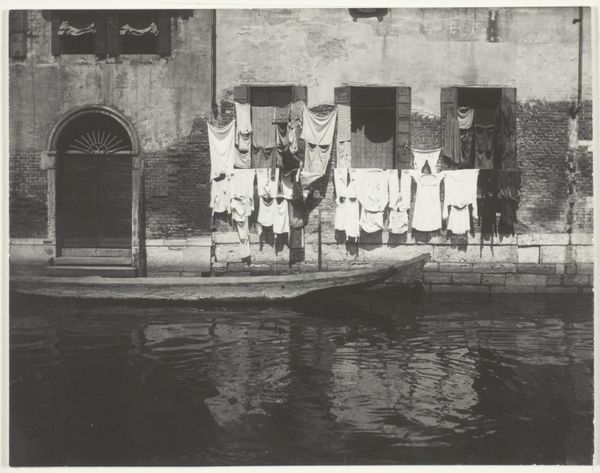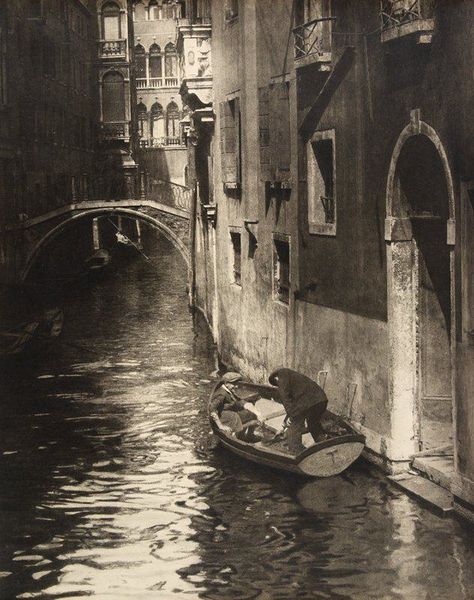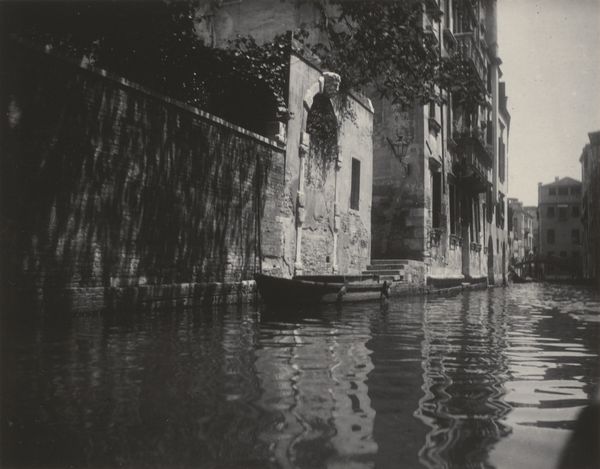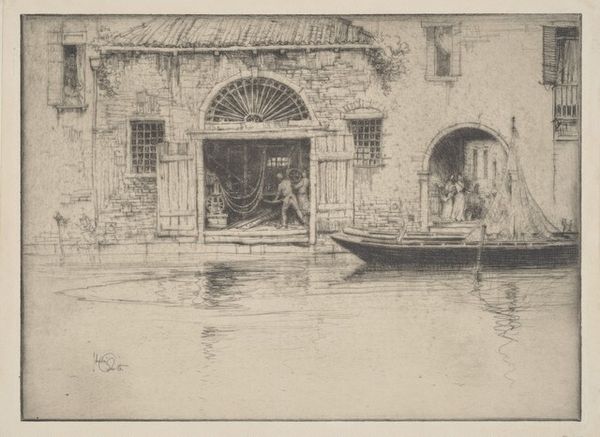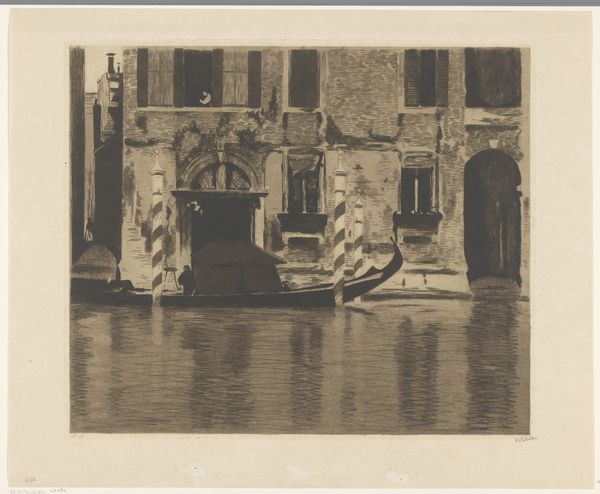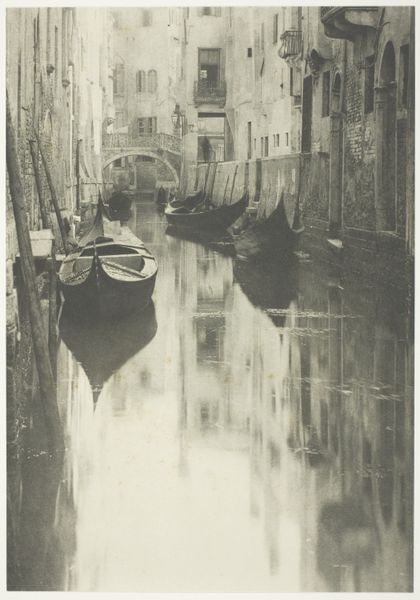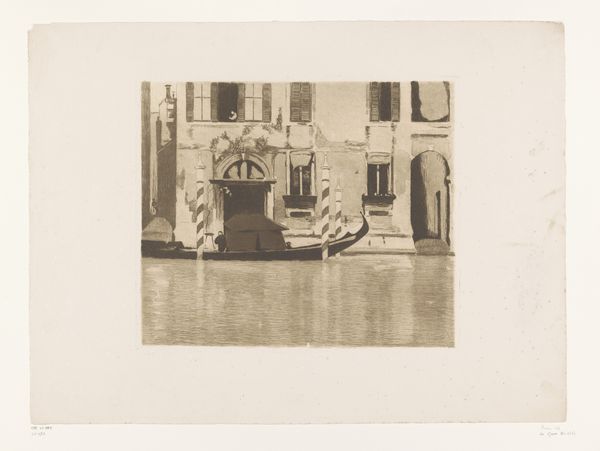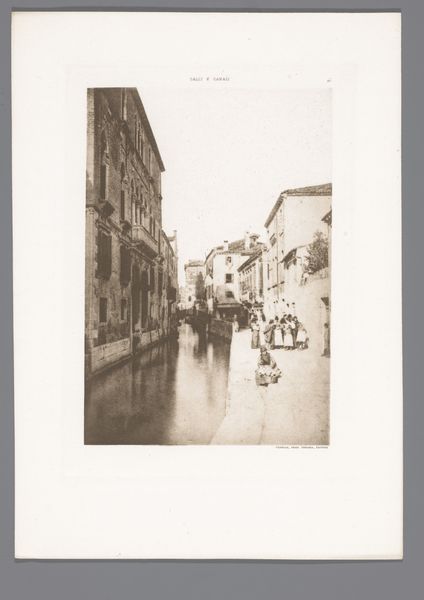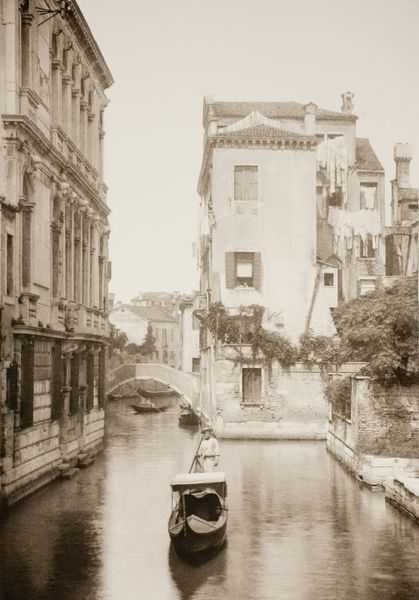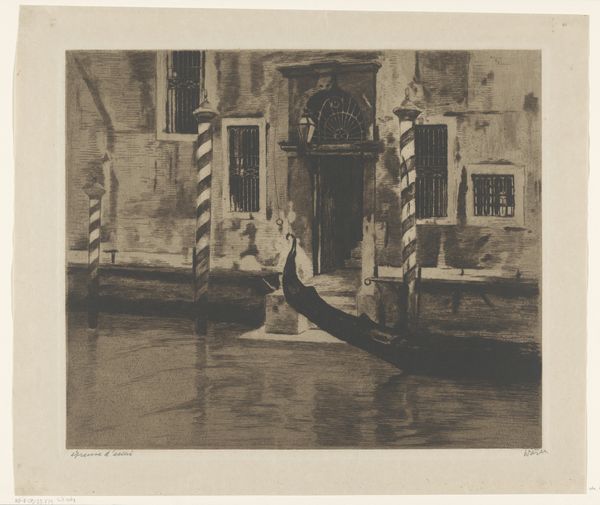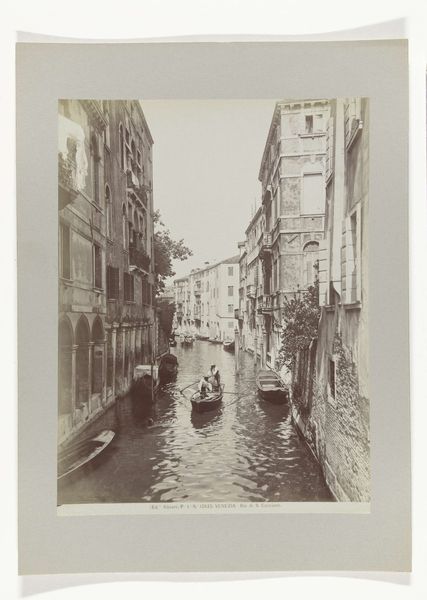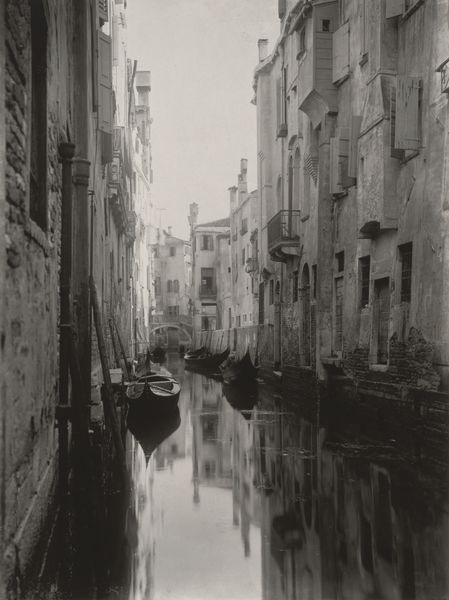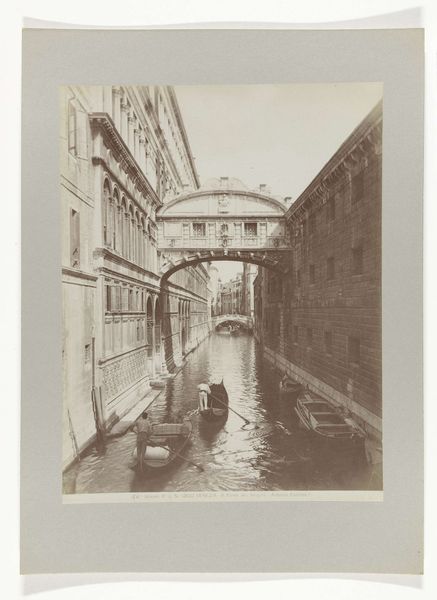
photography
#
excavation photography
#
outdoor environmental image
#
16_19th-century
#
photo restoration
#
natural tone
#
pictorialism
#
organic shape
#
colourisation
#
outdoor photograph
#
outdoor photo
#
photography
#
united-states
#
outdoor activity
#
shadow overcast
Dimensions: 20.9 × 29.3 cm (image/paper); 34.7 × 43.8 cm (mount)
Copyright: Public Domain
Editor: So, here we have Alfred Stieglitz's photograph, "Reflections—Venice," likely taken between 1894 and 1897. I find the overall muted palette quite striking. What symbols or underlying themes do you perceive in this work? Curator: Notice how the reflections dominate, almost eclipsing the solidity of the architecture. Venice itself is a potent symbol of transience, of a beautiful city slowly succumbing to the waters. Editor: I hadn't considered the city itself as a symbol! That’s fascinating. The way the buildings seem to melt into the water now feels deliberate. Curator: Exactly! Consider, too, how water often symbolizes the subconscious, the flow of emotions. Stieglitz captured Venice at a turning point. What emotions do the reflections evoke in you? Editor: A sense of nostalgia, definitely, but also a bit of melancholy. It feels like a memory fading at the edges. What's the impact of this photographic style? Curator: Pictorialism, like painting, prioritizes emotional effect and aesthetic beauty over sharp representation. The soft focus and tonal range amplify this feeling, blurring lines to deepen its emotional resonance, drawing from a collective memory. Editor: It’s interesting how the technique emphasizes the feeling of the image over pure documentation. It gives a lasting cultural connection through those shared symbols. Curator: Indeed, the reflections also prompt a sort of introspection. Perhaps Stieglitz used Venice as a symbolic mirror to prompt viewers to reflect on our own relationship with time, memory, and change. Editor: I learned so much, like recognizing visual continuity and exploring Venice as a city as a reflection of our fleeting realities! Curator: Absolutely! It's these layers of interpretation that make art so compelling across centuries.
Comments
No comments
Be the first to comment and join the conversation on the ultimate creative platform.
